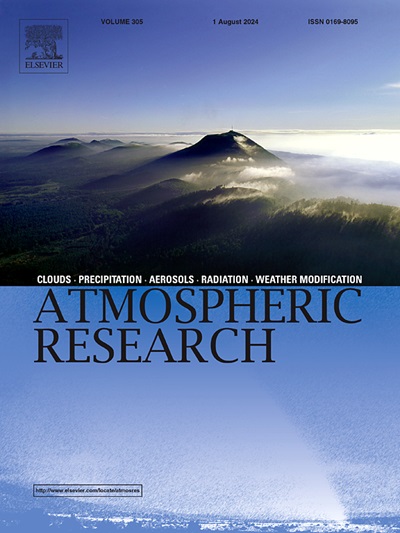从区域角度看跨年度气候异常对中西南亚副季节动态预测能力的影响
IF 4.4
2区 地球科学
Q1 METEOROLOGY & ATMOSPHERIC SCIENCES
引用次数: 0
摘要
El Niño-Southern涛动(ENSO)和印度洋偶极子(IOD)作为关键的海洋边界条件,在调节区域气候变率中起着关键作用。然而,它们对亚季节动力预报的影响尚未完全了解。本文以西南亚中部(CSWA)为研究对象,利用最先进的亚季节到季节(S2S)预测模型,研究了这些年际气候异常是否以及如何影响北纬初冬区域亚季节降水预测能力。首先,研究发现,与中性条件相比,La Niña和活跃IOD条件下2 - 4周的区域平均降水异常和干湿事件的确定性和概率预测能力显著增强,而El Niño条件的增强有限。ENSO影响的这种不对称性归因于El Niño对CSWA降雨影响的固有不确定性。其次,分析表明,目前运行的模型在预测ENSO提前1个月时表现出更高的技能,而对IOD的预测相对较不准确。尽管如此,提前1个月的强ENSO和IOD事件的预测误差与北纬初冬CSWA降水异常预测误差显著相关。本研究证实了海洋边界条件对区域亚季节动力预测的显著影响,并强调需要提高与ENSO和IOD相关的海面温度变化相关的亚季节预测技能,以减少降水预测误差,提高S2S预测的可靠性。本文章由计算机程序翻译,如有差异,请以英文原文为准。
Interannual climate anomalies modulate the subseasonal dynamical prediction skill from the regional perspective over Central Southwest Asia
The El Niño-Southern Oscillation (ENSO) and Indian Ocean Dipole (IOD), as key oceanic boundary conditions, play a pivotal role in modulating regional climate variability. However, their influence on subseasonal dynamical prediction has yet to be fully understood. Focusing on Central Southwest Asia (CSWA), a region urgently needing accurate subseasonal prediction and significantly influenced by ENSO and IOD, this study investigates whether and how these interannual climate anomalies affect regional subseasonal rainfall prediction skills during early boreal winter using state-of-the-art Subseasonal-to-Seasonal (S2S) prediction models. First, the study finds that both deterministic and probabilistic prediction skills for domain-averaged rainfall anomalies and dry/wet events at a 2–4-week lead are significantly enhanced under La Niña and active IOD conditions compared to neutral states, while El Niño conditions show limited enhancement. This asymmetry in the ENSO impact is attributed to the inherent uncertainty in El Niño's influence on CSWA rainfall. Second, the analysis reveals that currently operational models exhibit higher skill in predicting ENSO at a 1-month lead, whereas predictions for IOD are comparatively less accurate. Nonetheless, prediction errors for both strong ENSO and IOD events at a 1-month lead are found to be significantly correlated with rainfall anomaly prediction errors over CSWA during the early boreal winter. This study confirms the significant effect of oceanic boundary conditions on regional subseasonal dynamical predictions and emphasizes the need to improve subseasonal prediction skills related to sea surface temperature variability associated with ENSO and IOD in order to reduce rainfall forecast errors and enhance the reliability of S2S predictions.
求助全文
通过发布文献求助,成功后即可免费获取论文全文。
去求助
来源期刊

Atmospheric Research
地学-气象与大气科学
CiteScore
9.40
自引率
10.90%
发文量
460
审稿时长
47 days
期刊介绍:
The journal publishes scientific papers (research papers, review articles, letters and notes) dealing with the part of the atmosphere where meteorological events occur. Attention is given to all processes extending from the earth surface to the tropopause, but special emphasis continues to be devoted to the physics of clouds, mesoscale meteorology and air pollution, i.e. atmospheric aerosols; microphysical processes; cloud dynamics and thermodynamics; numerical simulation, climatology, climate change and weather modification.
 求助内容:
求助内容: 应助结果提醒方式:
应助结果提醒方式:


